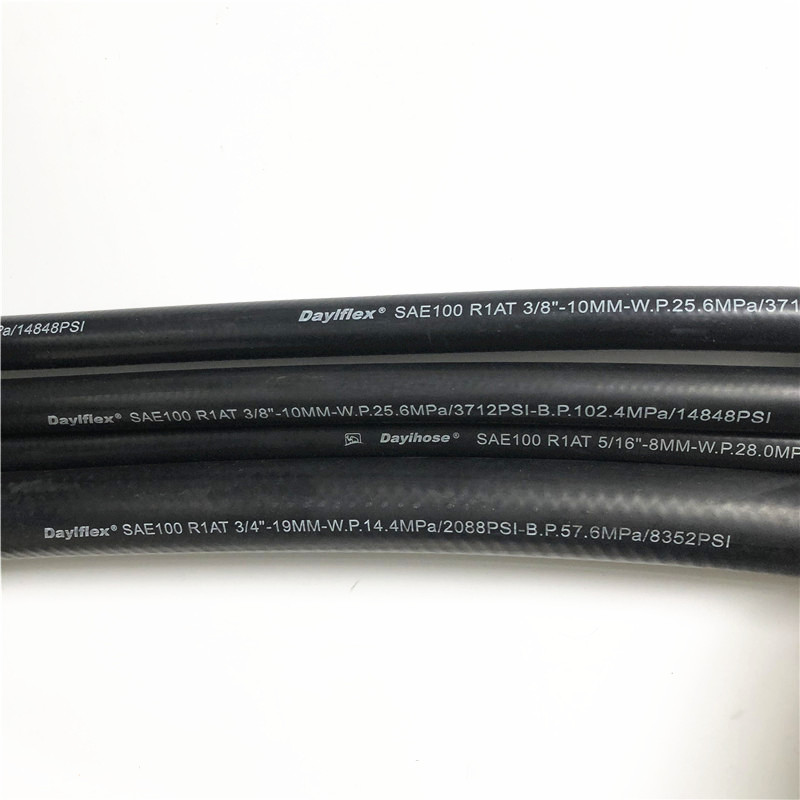335345435
Pro . 12, 2024 21:44 Back to list
Flexible Rubber Air Hose for Efficient Compressed Air Transmission and Durable Performance
Understanding Rubber Air Hoses A Comprehensive Guide
Rubber air hoses are essential tools in various industries and applications, providing a reliable way to transfer compressed air for pneumatic equipment. Whether you're a DIY enthusiast working on home projects, a professional mechanic in need of reliable tools, or an industrial operator managing heavy machinery, understanding the features and benefits of rubber air hoses can greatly enhance your efficiency and effectiveness.
What is a Rubber Air Hose?
A rubber air hose is a flexible tube designed to convey compressed air from a compressor to pneumatic tools, such as nail guns, impact wrenches, and spray guns. Unlike plastic or PVC hoses, rubber air hoses are designed for flexibility, durability, and resilience, making them well-suited for demanding environments where heavy-duty performance is required.
Key Features of Rubber Air Hoses
1. Durability One of the most significant advantages of rubber air hoses is their durability. They can withstand extreme temperatures, various weather conditions, and exposure to oil and chemicals without cracking or degrading.
2. Flexibility Rubber hoses maintain their flexibility even at low temperatures, making them easier to handle and store. Unlike stiffer materials, rubber can bend and twist without becoming kinked, ensuring continuous airflow.
3. Pressure Rating Rubber air hoses come with varying pressure ratings, typically ranging from 150 psi to over 300 psi. It's crucial to select a hose that can handle the pressure required for your specific application to prevent blowouts or leaks.
4. Anti-Static Properties Many rubber air hoses feature anti-static properties, which reduce the risk of static electricity buildup in environments where flammable substances are present.
rubber air hose

5. Size Options Rubber air hoses are available in various diameters and lengths, allowing you to choose a hose that fits your needs. Common diameters range from 1/4 inch to 1 inch, with lengths going up to 100 feet or more.
Applications of Rubber Air Hoses
Rubber air hoses are versatile and can be used in various applications, including
- Automotive Repairs Ideal for powering tools like air wrenches, paint sprayers, and tire inflators. - Construction Sites Used extensively in powering pneumatic tools, effectively handling high-demand tasks like hammering or drilling. - Manufacturing Essential in production lines for operating machinery and providing compressed air for various processes. - Home Use Perfect for DIY projects, including painting, inflating tires, and using air tools.
Maintenance and Care
To ensure your rubber air hose operates effectively for many years, proper maintenance is essential
1. Storage Store hoses in a cool, dry place, avoiding direct sunlight to prevent degradation. 2. Inspection Regularly check for cracks, abrasions, or leaks, especially at connection points. Early detection can save you from costly repairs and downtime. 3. Cleaning After use, especially in dusty or dirty conditions, wipe the hose to remove contaminants. This prevents abrasive wear and tear.
Conclusion
In summary, rubber air hoses are invaluable tools in a wide range of settings, offering flexibility, durability, and reliability. Understanding their features, applications, and maintenance can help ensure your pneumatic systems operate efficiently and effectively. Investing in a high-quality rubber air hose tailored to your specific needs will enhance your productivity, whether on the job site, in a workshop, or at home. With the right hose, you can ensure a seamless flow of compressed air for all your pneumatic requirements.
-
SAE 100 R17 Black Smooth Cover Hydraulic Hose
NewsMar.07,2025
-
SAE 100 R17 Black Smooth Cover Hydraulic Hose
NewsMar.07,2025
-
SAE 100 R17 Black Smooth Cover Hydraulic Hose
NewsMar.07,2025
-
SAE 100 R17 Black Smooth Cover Hydraulic Hose
NewsMar.07,2025
-
SAE 100 R17 Black Smooth Cover Hydraulic Hose
NewsMar.07,2025
-
steel wire braided hydraulic hose
NewsMar.07,2025



